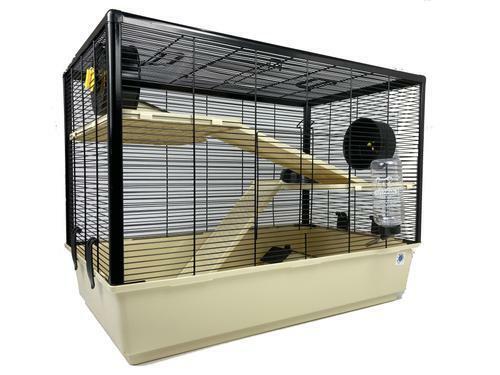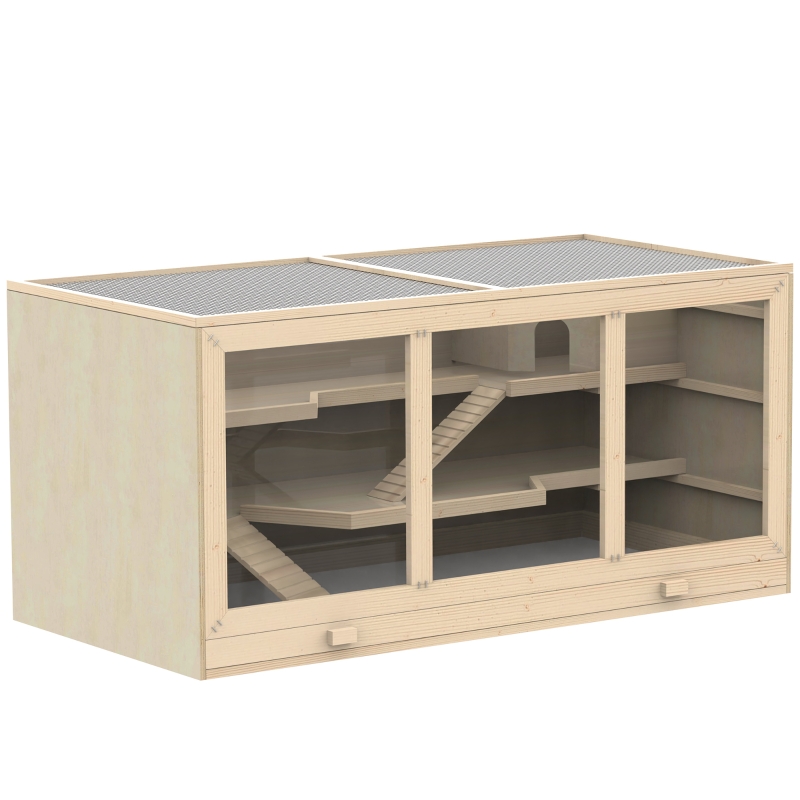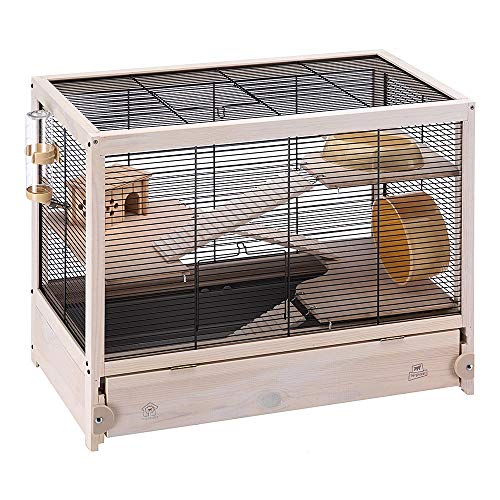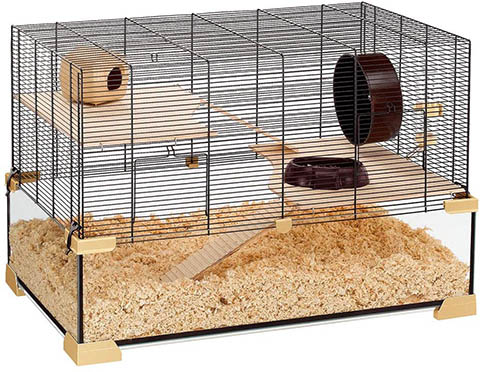Syrian hamsters are adorable and popular pets that make great companions for people of all ages. These small, furry creatures are relatively low-maintenance, but they do require some basic care in order to stay healthy and happy. One of the most important things that you can do for your Syrian hamster is to provide them with a suitable cage. In this article, we will discuss the best cage for a Syrian hamster and provide you with all the necessary information to help you make the right choice for your furry friend.
Can a Hamster Eat a Strawberry?
Seemore: Can a Hamster Eat a Strawberry?
Cage Size: Giving Your Syrian Hamster Enough Space to Thrive

The first thing to consider when choosing a cage for your Syrian hamster is the size. Syrian hamsters are active animals that need plenty of space to move around and explore. A cramped or small cage can lead to stress and health problems for your hamster. Therefore, it is crucial to choose a cage that is spacious enough for your hamster to thrive.
Minimum Cage Size for a Single Syrian Hamster
According to the American Society for the Prevention of Cruelty to Animals (ASPCA), the minimum cage size for a single Syrian hamster should be at least 24 inches long by 12 inches wide by 12 inches high. This size allows your hamster to have enough room to exercise, play, and burrow. However, keep in mind that this is the bare minimum and providing a larger cage is always better for your hamster’s well-being.
Choosing a Cage for Multiple Syrian Hamsters
If you plan on having more than one Syrian hamster, it is essential to provide them with a larger cage. As social animals, Syrian hamsters can live together peacefully if introduced properly and given enough space. The recommended cage size for two Syrian hamsters is at least 36 inches long by 18 inches wide by 18 inches high. For three or more hamsters, the cage should be even larger to accommodate their needs.
Table: Recommended Cage Sizes for Syrian Hamsters
| Number of Hamsters | Minimum Cage Size |
|---|---|
| Single | 24″ x 12″ x 12″ |
| Two | 36″ x 18″ x 18″ |
| Three or more | Larger than 36″ x 18″ x 18″ |
Cage Type: Wire Cages vs. Aquarium Cages

When it comes to choosing a cage for your Syrian hamster, there are two main types to consider: wire cages and aquarium cages. Each type has its own advantages and disadvantages, so it is essential to weigh them carefully before making a decision.
Wire Cages: The Most Common Type of Hamster Cage
Wire cages are the most popular type of hamster cage and are available in a variety of sizes and styles. They are made of metal wires with a plastic base and come with multiple levels and platforms for your hamster to climb and play on. Wire cages are well-ventilated, which is crucial for your hamster’s health, and they are also easy to clean. However, if your hamster is a chewer, the constant gnawing on the metal bars can be noisy and may cause damage to the cage over time.
Aquarium Cages: A Quieter Alternative
Aquarium cages, also known as tank cages, are made of glass or plastic and are typically larger than wire cages. They provide a quieter environment for your hamster, making them a great choice for those who live in apartments or have noise-sensitive pets. Aquarium cages also offer a better view of your hamster’s activities and are easier to decorate with toys and accessories. However, they can be more challenging to clean, and the lack of ventilation may lead to a build-up of ammonia from your hamster’s urine.
List: Pros and Cons of Wire Cages vs. Aquarium Cages
Wire Cages:
- Pros:
- Well-ventilated
- Easy to clean
- Multiple levels for your hamster to play on
- Cons:
- Noisy if your hamster is a chewer
- May cause damage over time
Aquarium Cages:
- Pros:
- Quieter environment
- Better view of your hamster’s activities
- Easier to decorate
- Cons:
- Challenging to clean
- Lack of ventilation can lead to ammonia build-up
Cage Features: What to Look for When Choosing a Cage for Your Syrian Hamster

Apart from size and type, there are a few essential features that you should look for when choosing a cage for your Syrian hamster. These features will not only make your hamster’s life more comfortable but also make your life as a pet owner easier.
A Solid Floor: Essential for Burrowing
Syrian hamsters are burrowing animals, which means they love to dig and create tunnels in their habitat. Therefore, it is crucial to choose a cage with a solid floor to allow your hamster to indulge in this natural behavior. A wire cage with a plastic base or an aquarium cage with a layer of bedding is ideal for your hamster’s burrowing needs.
Escape-proof Design: Keeping Your Hamster Safe
Hamsters are known for being escape artists, so it is essential to choose a cage with a secure design to prevent any Houdini-like escapes. Wire cages with narrow bar spacing (no more than ½ inch) and secure latches on the doors are the best option. For aquarium cages, make sure the lid is tightly secured and has no gaps for your hamster to squeeze through.
Easy Access Points: Making Cleaning and Handling Easier
Cleaning your hamster’s cage is a necessary task, and it should not be a hassle. Therefore, choose a cage with easy access points, such as large doors or removable lids, to make cleaning and handling your hamster more manageable. This will also come in handy when you need to take your hamster out of the cage for playtime or vet visits.
Cage Accessories: Creating a Fun and Enriching Environment for Your Syrian Hamster

Apart from the essential features, there are also various accessories that you can add to your hamster’s cage to create a fun and enriching environment for them. These accessories not only provide entertainment for your hamster but also promote their physical and mental well-being.
Exercise Wheel: A Must-have for Active Hamsters
Syrian hamsters are active animals that love to run, and an exercise wheel is a great way to fulfill this need. Choose a solid-surface wheel with a diameter of at least 8 inches to prevent any injuries to your hamster’s back. Avoid wire or mesh wheels as they can cause foot injuries.
Hideouts and Tunnels: Giving Your Hamster a Sense of Security
In the wild, hamsters live in burrows and tunnels, so providing them with hideouts and tunnels in their cage will make them feel safe and secure. You can purchase ready-made hideouts and tunnels or get creative and make your own using cardboard tubes and boxes.
Chew Toys: Keeping Your Hamster’s Teeth Healthy
Hamsters have constantly growing teeth, and they need to chew on things to keep them trimmed down. Providing chew toys in the cage will not only keep your hamster’s teeth healthy but also prevent them from chewing on other items in the cage, such as the bars or plastic platforms.
Conclusion: Choosing the Best Cage for Your Syrian Hamster

In conclusion, choosing the best cage for your Syrian hamster is crucial for their health and well-being. When considering a cage, make sure to keep in mind the size, type, and features that will provide your hamster with enough space to thrive and fulfill their natural behaviors. Adding accessories to the cage will also create a fun and enriching environment for your furry friend. With the right cage and accessories, you can ensure that your Syrian hamster has a happy and healthy life as your beloved pet.

